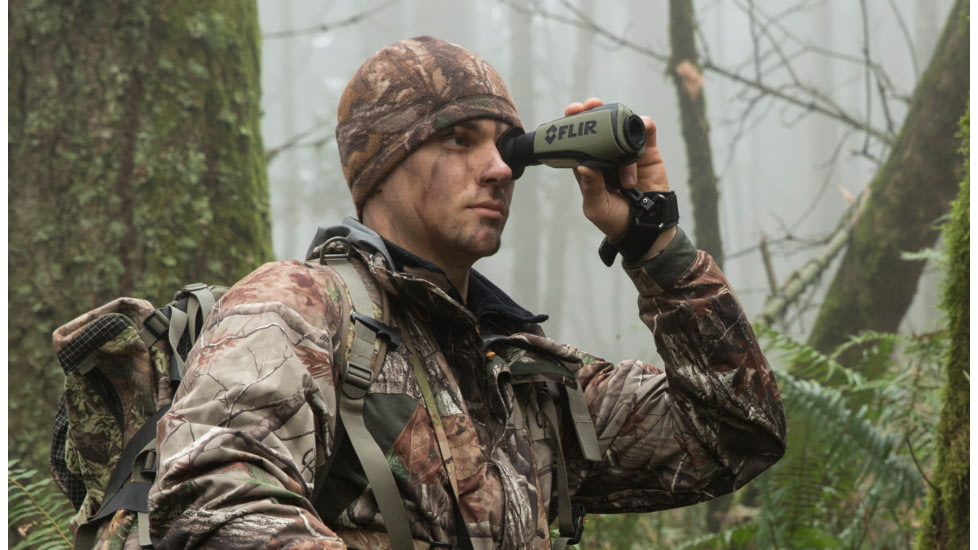Setting off into the backcountry to prepare for your next hunt is an exciting time. One of the best ways to increase your chances of success is by scouting the area you plan to hunt a few weeks beforehand, as this helps you get familiar with the area. From hiking over the mountains to traveling through basins, a proper glassing trip lets you spot the trophies you want to hunt and the best places to wait for them. However, before you can harvest anything, packing your supplies carefully ensures you are safe, prepared, and comfortable. Here are some top strategies and items to use.![]()
What Is E-Scouting?
Before you set off on your scouting trip, get an idea of the hunting area that you plan to use. Whether you are hunting on private or public land, getting familiar with the area helps you plan routes and locate important features. Often, the best way to do this is by using Google Earth to cyber scout the area, as this is a free service that provides detailed satellite photos. It allows you to find water sources, hiking trails, and access points. You can also use the maps to locate any ranger stations if you are on public land, as well as plan multi-day hiking routes.
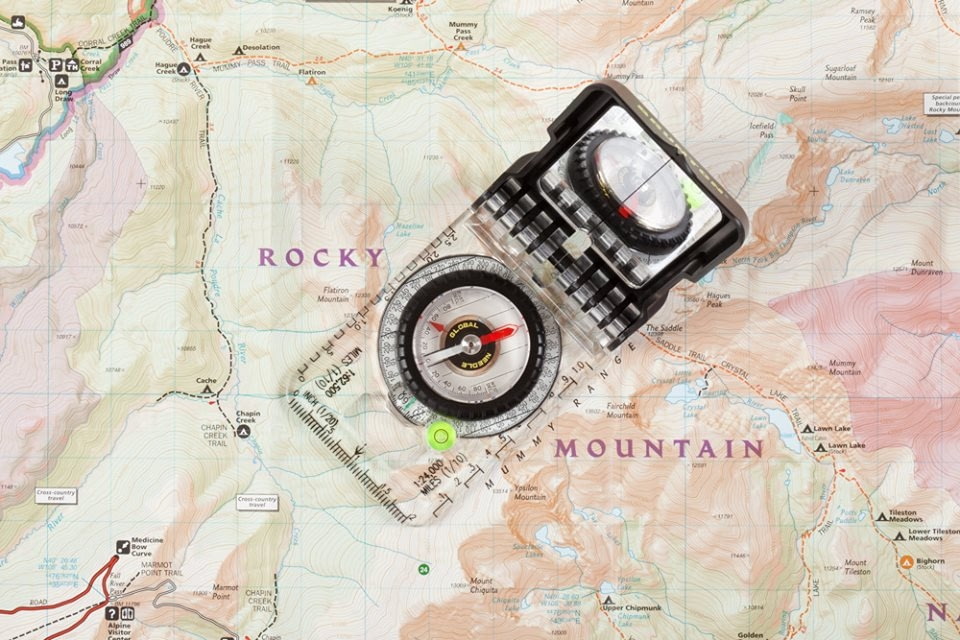 While viewing the maps, pay close attention to features where your prey is likely to gather. For example, if you’re after mule deer, search for mountain bowls, particularly those with a fresh water supply. These wide openings in the ridges provide cover from the elements and predators, as well as greenery and water for the mule deer to feed on. Once you have located some bowls that you want to scout, think about your access points and how you can get to the chosen spot. For public land, you may want to avoid the bowls that are immediately connected to the trail, as these are likely to be the most popular with other hunters. Instead, look for areas that require you to hike off the beaten path. While this is often more difficult, it is more likely to result in success.
While viewing the maps, pay close attention to features where your prey is likely to gather. For example, if you’re after mule deer, search for mountain bowls, particularly those with a fresh water supply. These wide openings in the ridges provide cover from the elements and predators, as well as greenery and water for the mule deer to feed on. Once you have located some bowls that you want to scout, think about your access points and how you can get to the chosen spot. For public land, you may want to avoid the bowls that are immediately connected to the trail, as these are likely to be the most popular with other hunters. Instead, look for areas that require you to hike off the beaten path. While this is often more difficult, it is more likely to result in success.
While many people hunt in the mountains, mule deer have a wide native range. For new western hunters, understanding the topography and the sheer size of the hunting area is crucial before you start scouting. For example, you may be in more of a sage desert, which can change how you scout and where you will find deer, since there are fewer water sources. Alternatively, scouting the North Slopes is also an option for newer hunters, as this area is usually cooler and shaded during most of the day. Regardless of where you choose, check the elevation and the exact landscape before you arrive.
How Do You Stay Hydrated While Scouting?
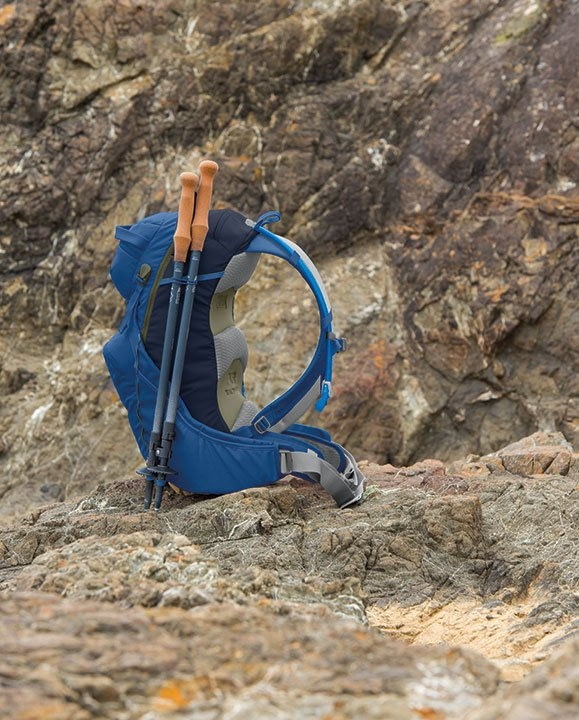 The next step in preparing for your scouting trip is getting your pack ready. One of the most important aspects is ensuring you have enough clean, fresh water to last you. Generally, you need at least 3 liters of water each day to stay hydrated. However, if you plan to hike several miles each day or you are expecting tough conditions or extremely hot weather, bring at least 5 liters of water each day. There are several ways to store the water to keep it accessible, such as 1-quart bottles, which are small enough to fit into your backpack easily. You can also bring a large water bladder that sits in your pack and has a tube you can drape over your shoulder for easy access if your pack doesn’t have integrated features to run a line through. If you only plan to go out for a day or two at a time, military-style collapsible canteens are recommended, as you can collapse them after drinking the supply. Additionally, bring some electrolyte drink mix packets with you. This helps your body recover after a long day of hiking through the backcountry, preventing dehydration and helping your muscles heal.
The next step in preparing for your scouting trip is getting your pack ready. One of the most important aspects is ensuring you have enough clean, fresh water to last you. Generally, you need at least 3 liters of water each day to stay hydrated. However, if you plan to hike several miles each day or you are expecting tough conditions or extremely hot weather, bring at least 5 liters of water each day. There are several ways to store the water to keep it accessible, such as 1-quart bottles, which are small enough to fit into your backpack easily. You can also bring a large water bladder that sits in your pack and has a tube you can drape over your shoulder for easy access if your pack doesn’t have integrated features to run a line through. If you only plan to go out for a day or two at a time, military-style collapsible canteens are recommended, as you can collapse them after drinking the supply. Additionally, bring some electrolyte drink mix packets with you. This helps your body recover after a long day of hiking through the backcountry, preventing dehydration and helping your muscles heal.
Since water is one of the most important resources, prepare for emergencies by bringing water treatment supplies. One excellent method is to bring a small water filter. This lets you remove parasites, sediment, and other contaminants. Alternatively, you can bring chlorine or iodine tablets, as these are extremely small and allow you to quickly treat water while on the go. If you bring tablets, pack some coffee filters as well, as this is an easy, cheap way to remove solid debris from the water. Opting for filtering and treating your water is also useful, as you can plan your routes around watering holes so that you don’t have to bring as much water from home with you, keeping your bag light. You can learn more about this in our How to Purify Water & Pick a Camping Water Filter guide.
What Should You Bring in Your Backpack?
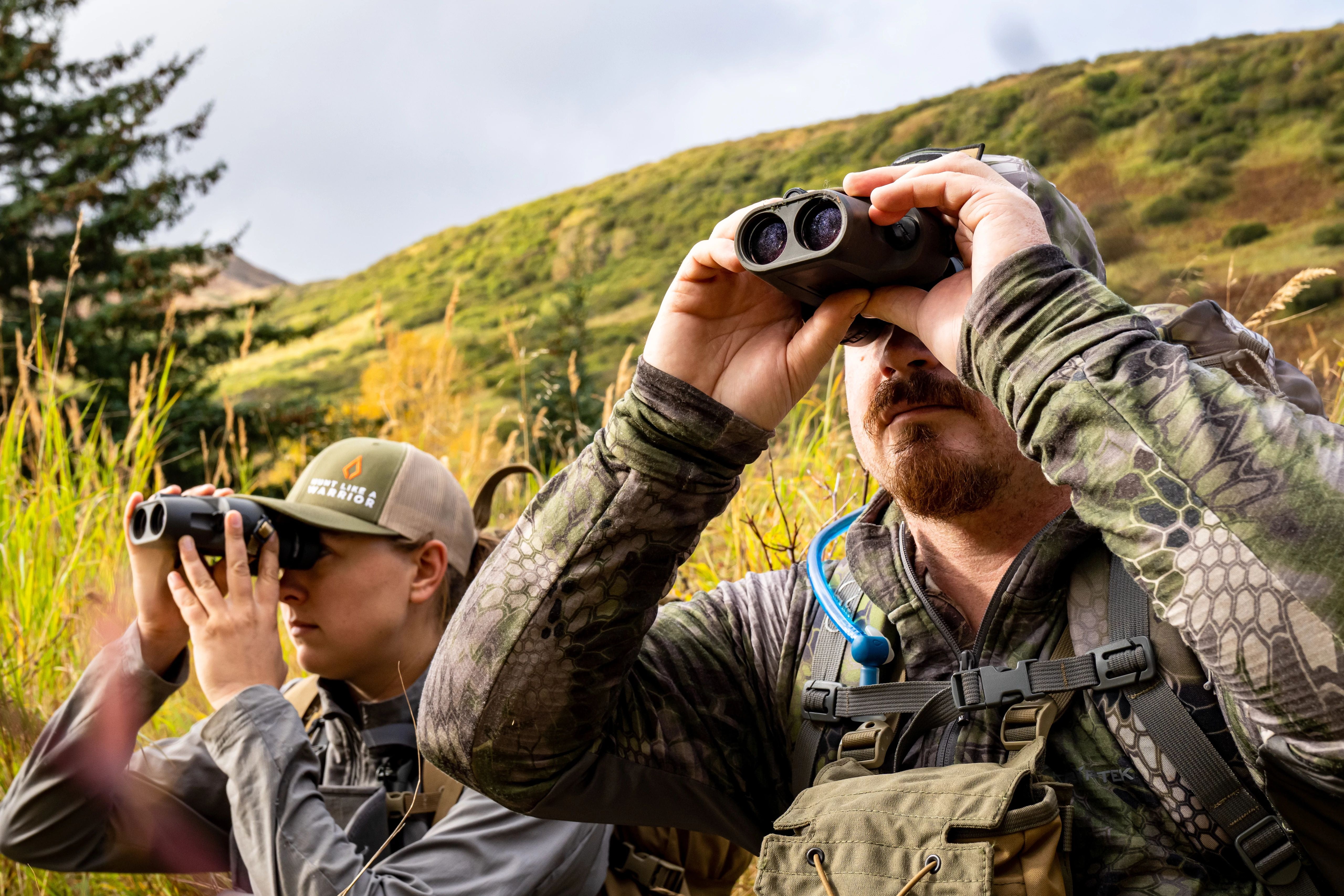 When hiking through the backcountry, the weight of your backpack matters. Even a few extra ounces can weigh you down heavily after traveling for several miles over rough terrain, so prioritizing lightweight and multipurpose items helps you reduce clutter and stay nimble. However, don't skimp on useful materials, as scouting mule deer and camping in the mountains can be dangerous. To start, you need a large, durable backpack. For short day trips, you can often get by with a smaller pack that is around 2,000 cubic inches. If you are planning to stay outside for several days at a time, opt for one that is at least 2,600 cubic inches. This gives you more space for food and water, as well as your camping, glassing, and scouting supplies.
When hiking through the backcountry, the weight of your backpack matters. Even a few extra ounces can weigh you down heavily after traveling for several miles over rough terrain, so prioritizing lightweight and multipurpose items helps you reduce clutter and stay nimble. However, don't skimp on useful materials, as scouting mule deer and camping in the mountains can be dangerous. To start, you need a large, durable backpack. For short day trips, you can often get by with a smaller pack that is around 2,000 cubic inches. If you are planning to stay outside for several days at a time, opt for one that is at least 2,600 cubic inches. This gives you more space for food and water, as well as your camping, glassing, and scouting supplies.
Speaking of glassing supplies, the equipment you bring can make or break the scouting trip. The right binoculars, spotting scope, tripod, and camera are crucial, as this helps you spot mule deer and elk from hundreds of yards away. For the spotting scope, opt for one with variable zoom so that you can get details from a variety of ranges. When searching for binoculars, selecting the right pair is a balance between size and capability. Since you have a spotting scope, you don’t need extremely powerful binoculars, so you can opt for a smaller pair. The tripod is also an important piece, especially for multi-day trips. After a long day of hiking to your hunting area, holding a spotting scope steady is difficult, as your hands may be shaky. Instead, mounting it on a tripod ensures you get a clear, accurate view of nearby game.
 After getting a pack, prioritize items that you should always have with you. For example, a GPS emergency device, such as the Garmin inReach Mini, is a handheld GPS that helps you navigate the area. It can also broadcast your location if you need help, alerting emergency services to your location if you are injured. Additionally, bring a well-stocked first-aid kit with you. It should include bandages, antiseptic ointment, gauze, and pain relief medicine so that you can treat minor wounds during your trip. Another important piece of first aid is a tourniquet, which can stabilize larger wounds.
After getting a pack, prioritize items that you should always have with you. For example, a GPS emergency device, such as the Garmin inReach Mini, is a handheld GPS that helps you navigate the area. It can also broadcast your location if you need help, alerting emergency services to your location if you are injured. Additionally, bring a well-stocked first-aid kit with you. It should include bandages, antiseptic ointment, gauze, and pain relief medicine so that you can treat minor wounds during your trip. Another important piece of first aid is a tourniquet, which can stabilize larger wounds.
General supplies are next on the priority list for a western scouting trip. One item that is particularly useful if you are using the e-scouting method is a solar-powered battery, as you can use this to charge your phone. This allows you to pull up maps of the area over several days without worrying about your phone dying. You should also have a multi-tool, like a Leatherman, as this can be a lifesaver while camping and hunting. Choose one that has scissors, a small saw, pliers, and a knife for the most use, as this lets you trim bandages, cut twigs, and fix items while you’re out. Finally, grab some comfort items that will make your trip easier, like wet wipes. You can also bring a tarp, as you can place this under the tent if the ground is wet or hang it above the shelter if it starts to rain. A headlamp is also useful for navigating in the dark, as it keeps your hands free while hiking.
What Kind of Tent Should You Bring?
If you’re planning to scout the hunting area for several days, you will need reliable shelter. A small, lightweight tent is often the best choice, especially if you are alone, as you can transport it easily. This allows you to pack it, set it up, and use it quickly without weighing down your backpack. In addition to the tent, bring a small pillow and a sleeping bag to keep you warm. Even during the summer, it can get extremely cold at night in the backcountry, so wearing warm clothing and using an insulated sleeping bag will protect you from the elements. Another item you can bring is rope, as this allows you to tie the tent down to a nearby tree or rock if you are expecting windy conditions.
What Are the Best Boots for Backcountry Hiking?
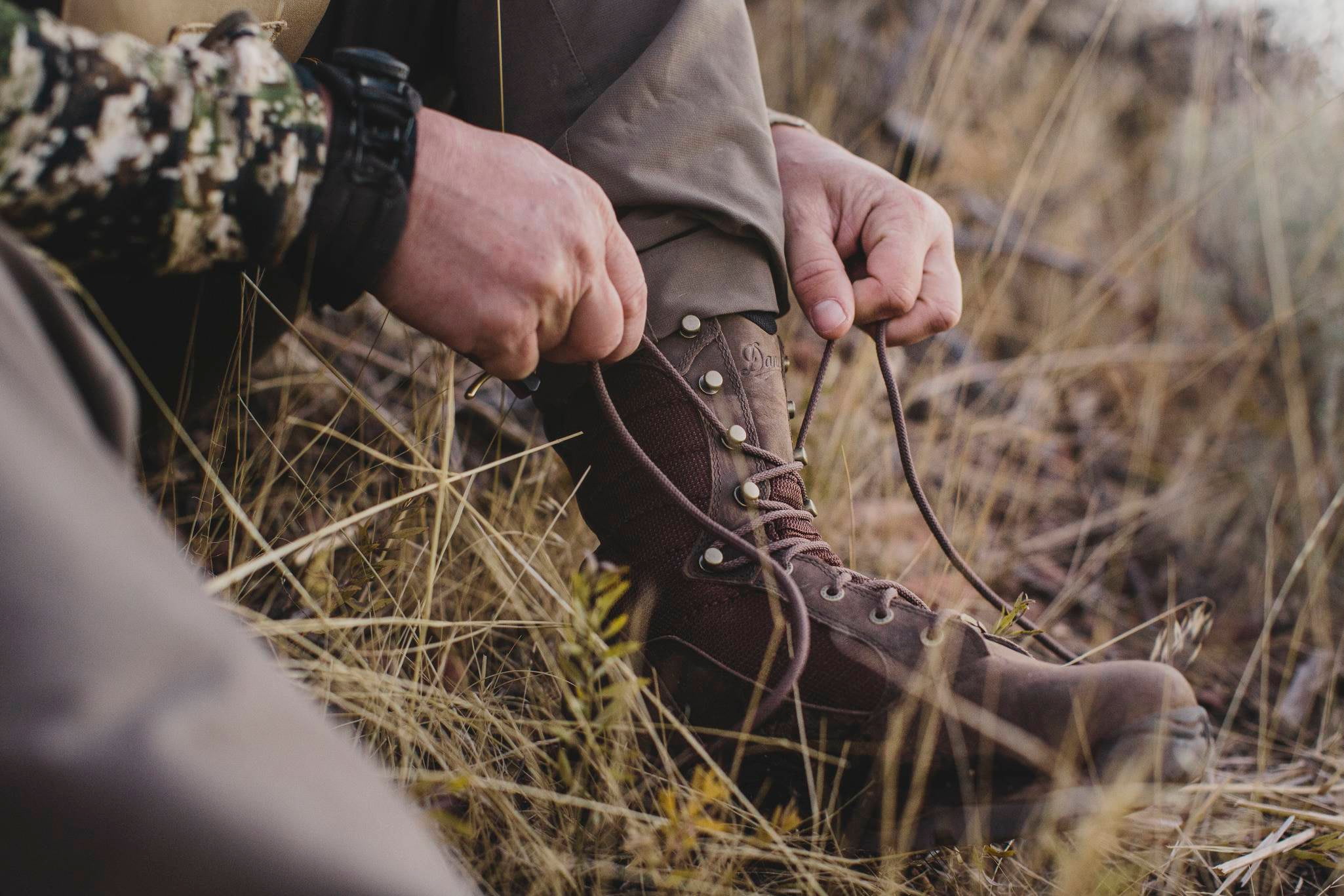 Hiking is a strenuous activity, especially in western states where you are rapidly changing elevations and dealing with steep hills and deep valleys. Since scouting involves traveling far and wide to find feeding, watering, and bedding areas for mule deer and elk, you need high-quality hiking boots to protect your feet and prevent injuries. If you don’t have boots, finding the right pair depends on your preferences and needs. The first aspect to decide on is what material you want. Commonly, hiking boots are made from either leather or a synthetic material that resembles leather. The former is a solid choice because it is extremely durable and waterproof. However, it is heavy, which can be uncomfortable if you are hiking for several days. Alternatively, synthetic boots usually offer water resistance and durability at a lighter weight. The downside to this option is that it may not form around your feet as well, so it can take some time to break in new boots.
Hiking is a strenuous activity, especially in western states where you are rapidly changing elevations and dealing with steep hills and deep valleys. Since scouting involves traveling far and wide to find feeding, watering, and bedding areas for mule deer and elk, you need high-quality hiking boots to protect your feet and prevent injuries. If you don’t have boots, finding the right pair depends on your preferences and needs. The first aspect to decide on is what material you want. Commonly, hiking boots are made from either leather or a synthetic material that resembles leather. The former is a solid choice because it is extremely durable and waterproof. However, it is heavy, which can be uncomfortable if you are hiking for several days. Alternatively, synthetic boots usually offer water resistance and durability at a lighter weight. The downside to this option is that it may not form around your feet as well, so it can take some time to break in new boots.
After picking a material, consider insulated and non-insulated options. For this choice, pick based on the season that you plan to use the boots. For example, scouting trips often take place in the late summer and early fall, so the weather is warm and the climate is mild. In this case, non-insulated hunting boots offer breathability to keep your feet cool while you hike. However, hunting season takes place during the peak of fall and early winter, so you may also need a pair of insulated boots for this period.
Another consideration is how tall you want the boots to be. For western hunting and scouting, avoid mid-calf and knee-high boots, as these are primarily for swampy, wet areas. Using tall boots can severely restrict your movement while navigating steep hills and trails, so opt for shorter boots instead. Generally, boots that rise just above your ankles are the best because they provide excellent support so that you don’t roll your ankles while stepping on rocks. Regardless of the type, break them in thoroughly before leaving. To do this, wear them regularly during daily activities, such as walking your dog, mowing the lawn, and picking up around the house.
How Can You Dress Appropriately for a Scouting Trip?
Dressing for a western scouting trip depends on the expected forecast. Generally, you want clothes that are lightweight and breathable, as this helps you stay cool when hiking. Also, pick clothes that let you dress in layers so that you can shed or add clothes depending on the current temperature and your activity level. For example, a simple, thin undershirt made from Merino wool helps keep you warm while hiking. Then, you can wear a light, long-sleeved shirt over this that you can take off easily if you get too hot during the trip. Also, always bring a lightweight jacket in case it starts raining.
As for pants, choose a durable material that isn’t extremely heavy. Often, this means jeans are not a reliable choice, as they are not flexible or light enough for long hiking trips. Instead, opt for tactical or hunting pants made from a blend of polyester and cotton. These pants also tend to have more pockets along the sides, allowing you to keep your multi-tool, phone, and other small items on your body for easy access.
Finally, bring extra pairs of non-cotton socks and underwear. Although this adds weight to your backpack, you don’t want to forget spares. Slipping and falling into a stream or watering hole can soak your clothes quickly and trying to hike in wet fabric is uncomfortable. By bringing some extra clothes, you can quickly change into dry options that keep you comfortable.
What Food Should You Bring?
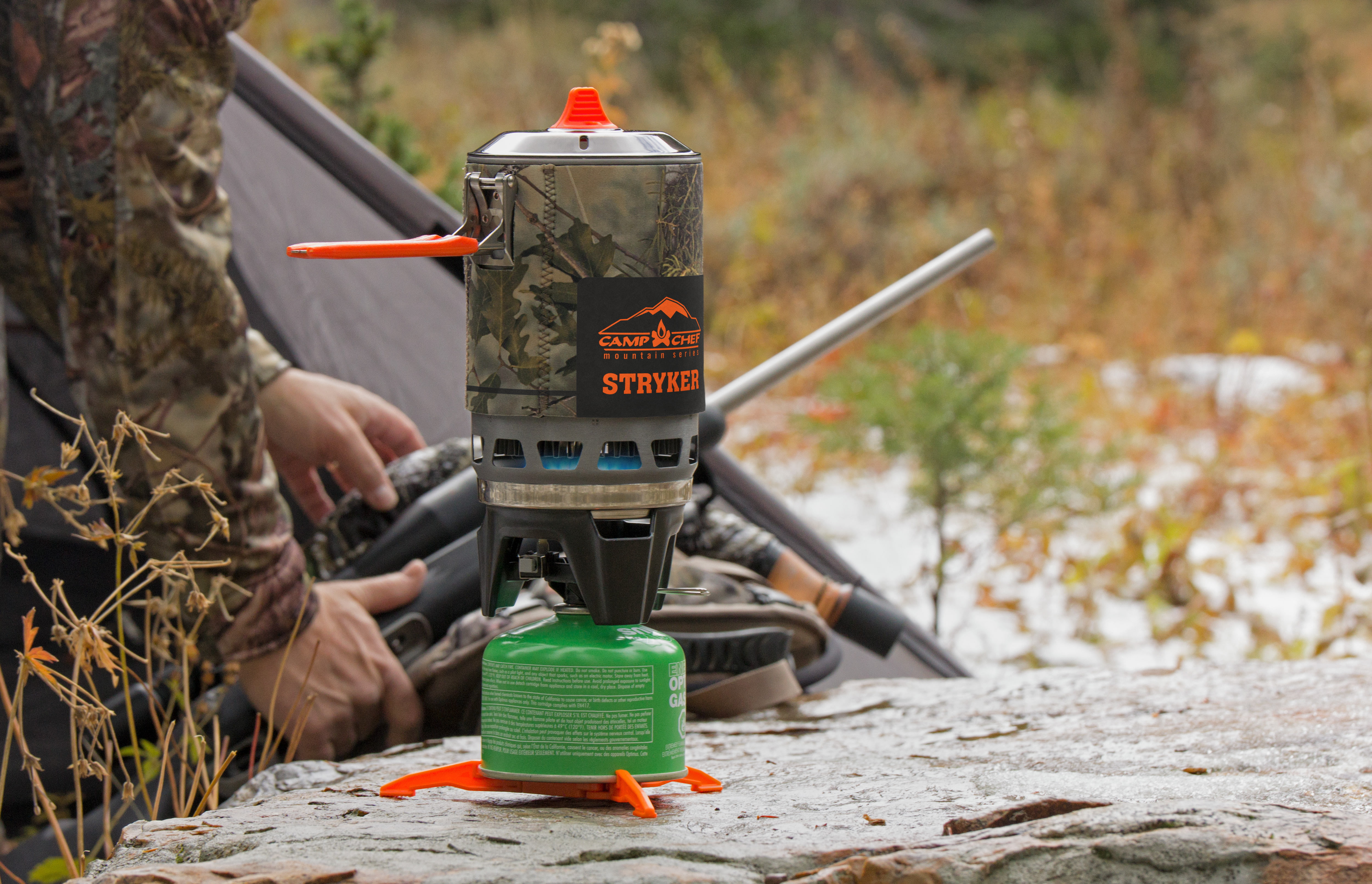 Since scouting for mule deer requires a lot of effort and energy, you should eat plenty of filling, nutritious food each day that you are out in the backcountry. Aim for about 3,000 calories each day, as this replenishes what your body has burned and keeps you alert and active. To start, bring a camping stove and a collapsible pot so that you can cook dry items that you bring, such as rice and beans. These foods are high in calories and filling, so you don’t have to bring a lot. Also, bring plenty of small snacks that you can eat as you hike to keep your energy level up. For example, high-calorie protein bars are a popular choice because you can fit them in your pockets and eat them sporadically. Similarly, many people stock up on jerky and trail mix, as these items contain a lot of protein to give you energy.
Since scouting for mule deer requires a lot of effort and energy, you should eat plenty of filling, nutritious food each day that you are out in the backcountry. Aim for about 3,000 calories each day, as this replenishes what your body has burned and keeps you alert and active. To start, bring a camping stove and a collapsible pot so that you can cook dry items that you bring, such as rice and beans. These foods are high in calories and filling, so you don’t have to bring a lot. Also, bring plenty of small snacks that you can eat as you hike to keep your energy level up. For example, high-calorie protein bars are a popular choice because you can fit them in your pockets and eat them sporadically. Similarly, many people stock up on jerky and trail mix, as these items contain a lot of protein to give you energy.
For breakfast, stick to light items to prevent stomach issues when you go out onto the trails. Popular options are dried fruits, protein drinks, and oatmeal. These items don’t weigh much, keeping your pack light. At lunch, you will want something with carbohydrates and protein to replenish your energy and repair your muscles. One delicious, simple way to do this is to spread peanut butter on a bagel or tortilla. You can also bring packets of tuna that you can rip open and eat quickly. At the end of the day, eating a filling dinner can help you prepare for the next leg of your trip. Survival food is a common option, such as MREs, as these are simple to make and quite filling. You can also use your pot and camp stove to make rice and beans, adding in dehydrated meat or tuna to round out the meal.
Prepare for Your Scouting Trip Today
With these tips, you can maximize your chances of filling your tags this year. Western hunting is fun and rewarding, as the time it takes to prepare for the season eventually pays off when you snag a muley and have fresh meat for the whole family. Shop our Hunting Gear and Outdoor Equipment categories for more products to help you on your scouting trip.





















